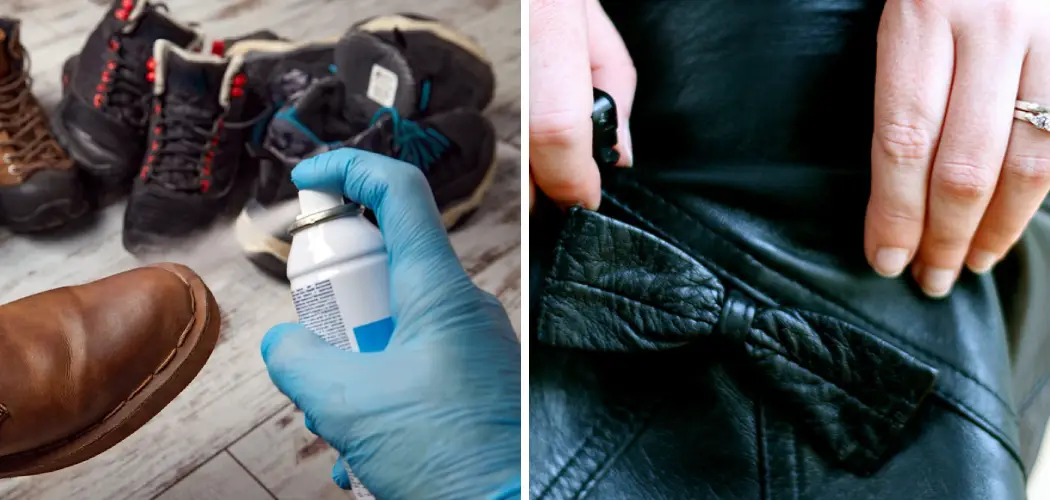The allure of soft, supple leather is undeniable, and while leather goods often gain character with age, sometimes a little extra care is needed to achieve that desired level of softness.
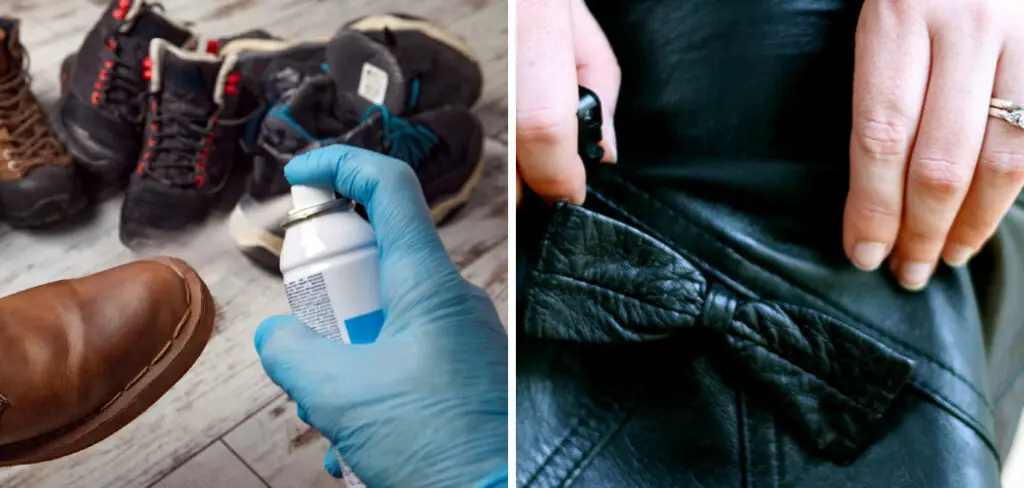
Whether you’re dealing with a stiff jacket, boots, or a well-worn sofa, knowing how to make leather softer can breathe new life into your cherished items. In this comprehensive guide, we delve into a variety of techniques and methods to enhance the softness of leather, catering to different types of leather and the unique needs of various items.
From natural conditioning agents to specialized treatments, this exploration equips you with the knowledge and skills to restore that luxurious, buttery feel to your leather possessions, ensuring they remain not just functional but also a pleasure to touch and experience.
Importance of Softening Leather
Softening leather is more than a mere aesthetic enhancement; it is crucial for the longevity and comfort of leather goods. Stiff leather can lead to creases and cracking, which not only detracts from the appearance but also diminishes the item’s durability.
Furthermore, soft leather adapts more readily to the shape of its user, providing a personalized fit and improved comfort. This is particularly important in items such as shoes or gloves, where flexibility translates directly to user comfort. Ensuring the leather remains soft is also an indication of well-maintained quality, preserving both the item’s value and its timeless appeal.
Benefits of Soft Leather
Softened leather not only contributes to the aesthetic value of your items but also enhances their versatility and wearability. A supple leather piece molds to the contours of the user, allowing for a more comfortable and customized fit.

For example, leather shoes or a jacket that has been softened will likely not cause blisters or discomfort during prolonged use. Additionally, the pliability of soft leather reduces the likelihood of damage through tearing or cracking, essentially extending the lifespan of the item.
On a sensory level, soft leather items are more inviting to the touch, appealing to the sense of luxury and quality that leather is renowned for, making them highly sought after in the fashion and luxury markets.
Understanding Leather
Before diving into the softening process, it is vital to understand the nature of leather itself. Leather is a natural, durable material created through the tanning of animal hides and skins. Its unique properties are a result of the fibrous structure that, while inherently tough, can vary greatly depending on the animal of origin and the specific tanning process used.
Full-grain leather, for instance, offers a high level of durability and retains the hide’s natural texture, whereas top-grain leather is sanded and may be treated with various finishes. This diversity in types and treatments of leather impacts how it should be cared for and ultimately, how it will respond to softening techniques.
A thorough comprehension of the type of leather you possess will guide you in selecting the appropriate methods to achieve the desired softness without damaging the material.
Characteristics of Soft Leather
When identifying soft leather, there are several key characteristics to consider. One of the most noticeable is the leather’s suppleness, which reflects its capacity to drape and fold with ease. The surface of soft leather will often display a gentle, natural grain and a plush touch that is responsive to pressure.
Another indicator is elasticity; soft leather should show a degree of stretch and return to its shape without permanent deformation. Breathability is also enhanced in softer leathers, contributing to a comfortable user experience by regulating temperature and moisture when in contact with the skin.
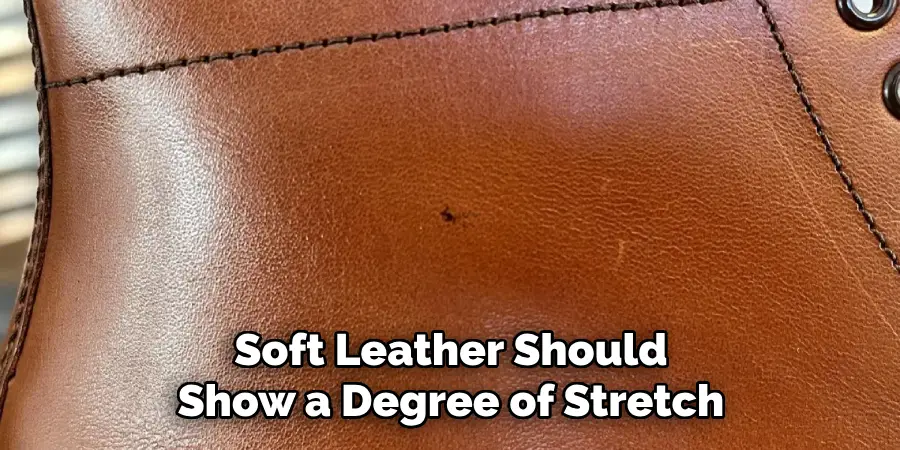
Lastly, soft leather typically has a patina that develops over time, adding character and depth to its appearance. Recognizing these traits can help in assessing the current state of leather items and measuring the effectiveness of various softening methods.
Factors Affecting Leather Softness
Various factors determine the natural softness of leather and how it responds to softening techniques. The origin of the leather is one such factor, as hides from different animals have distinct fibrous structures.
For example, lambskin is typically softer than cowhide due to its finer fiber texture. The age of the leather also plays a role; newer leather may be stiffer and require time or treatment to become supple, whereas older leather might have naturally softened over time through use.
The tanning process significantly influences leather’s texture, with vegetable-tanned leather generally being stiffer than chrome-tanned leather. The quality of the hide and how it was preserved prior to tanning can also affect softness; high-quality hides with minimal scarring or imperfections tend to be softer.
Additionally, the environment the leather is stored or used in can have consequences; leather can dry out and stiffen in very dry climates, or may retain more moisture in high humidity, affecting its pliability.
Finally, the frequency and type of maintenance given to a leather item is crucial. Regular conditioning and proper storage will preserve and may enhance its softness over time. Understanding these factors allows for a more targeted approach when applying softening techniques to different leather goods.
10 Methods How to Make Leather Softer
1. Leather Conditioner Application:
Applying a high-quality leather conditioner is a fundamental step in making leather softer. Choose a conditioner appropriate for your type of leather, be it full-grain, top-grain, or genuine leather. Conditioners moisturize the leather, preventing it from drying out and becoming stiff.
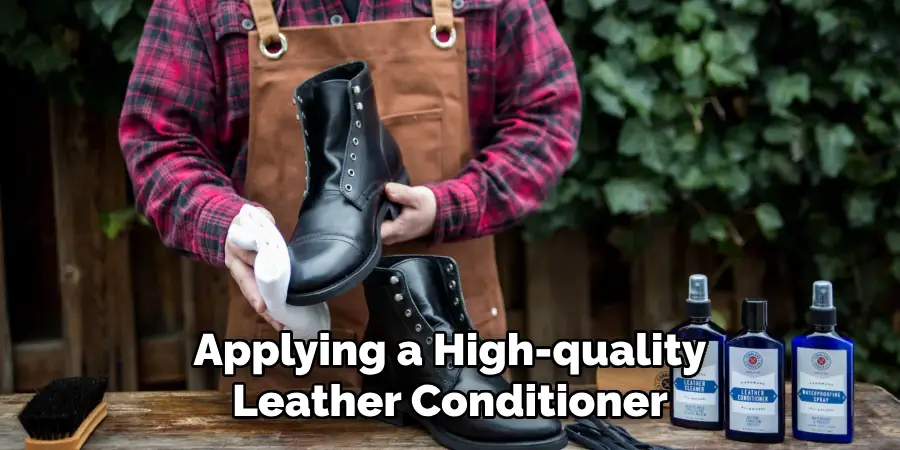
Apply the conditioner evenly, following the product instructions. Massage the conditioner into the leather with a soft cloth or sponge, focusing on areas that tend to show wear such as elbows and seat cushions. Leave the conditioner on for the recommended time, and then remove any excess with a clean cloth.
Aside from making leather softer, conditioners also help protect it from stains and spills. Regular conditioning can also prevent cracking and peeling of the leather, extending its lifespan. It is recommended to condition leather at least twice a year, but more often if exposed to harsh elements.
2. Natural Oils and Balms:
Natural oils, such as coconut oil, jojoba oil, or olive oil, can be effective in softening leather. Apply a small amount of the chosen oil to a clean cloth and rub it onto the leather in a circular motion.
Be cautious with the quantity, as excessive oiling may lead to a greasy feel. Alternatively, specialized leather balms containing natural oils can also be used. These balms not only moisturize the leather but also provide protection against water and stains.
Additionally, natural oils and balms can help restore the shine and color to older or worn-out leather items. Regularly applying these products can prevent cracking and keep the leather looking new for longer.
Some other benefits of using natural oils on leather include nourishing and conditioning the material, making it more flexible and less prone to wrinkles. They can also help to maintain the natural texture of the leather without causing any damage.
3. Warm Towel Conditioning:
For smaller leather items like gloves or belts, use a warm, damp towel to condition the leather. Place the leather item inside the warm towel, allowing the moisture and heat to penetrate the material. Afterward, apply a leather conditioner to replenish lost oils and enhance softness. Gently rub the conditioner into the leather, using circular motions and a clean cloth. Avoid over-conditioning, as it can cause an oily residue.
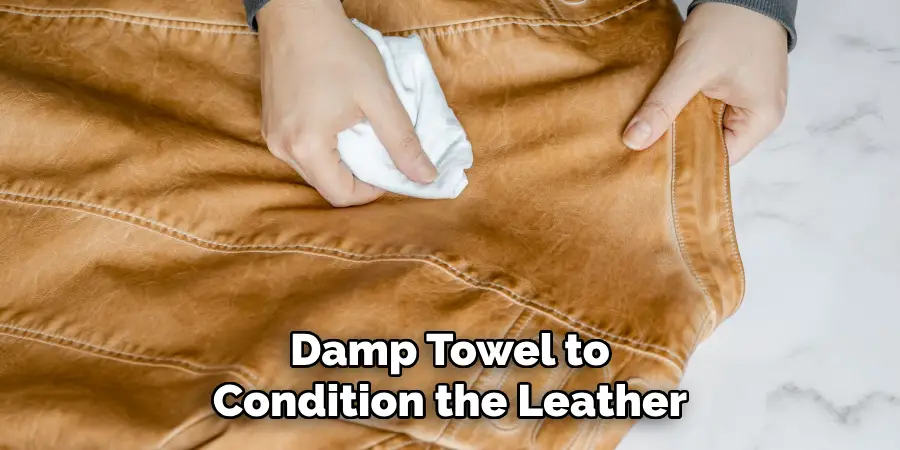
To maintain the quality of your leather items, it is important to regularly condition them. This not only helps to keep them looking new but also extends their lifespan. Depending on how often you use the item, conditioning can be done every few months or once a year.
In addition to warm towel conditioning, there are other methods you can use to condition your leather items. Some people prefer using natural oils like coconut oil, olive oil, or almond oil as a conditioner. These oils are gentle and nourishing for the leather, providing deep moisture and softening the material.
4. Leather Softening Sprays:
Leather softening sprays are formulated specifically to improve the flexibility and softness of leather. These sprays often contain conditioning agents that penetrate the leather fibers. Apply the spray evenly and use a clean cloth to massage it into the leather. Follow the product instructions for optimal results.
Leather softening sprays are a great way to maintain the quality and flexibility of your leather products. They can be used on a variety of items such as shoes, wallets, bags, and even furniture. These sprays work by penetrating the leather fibers and replenishing any lost moisture or oils.
One of the main benefits of using leather softening sprays is that they help prevent the leather from cracking or drying out. As leather ages, it can lose its natural oils and become stiff and brittle. The conditioning agents in these sprays work to replenish and restore the moisture and flexibility of the leather, keeping it soft and supple.
5. Use a Hair Dryer:
Heat can aid in softening leather. Use a hair dryer on a low heat setting to warm the leather, focusing on areas that feel stiff. Once warmed, massage a leather conditioner or natural oil into the leather while it’s still warm. This helps the conditioner penetrate the leather more effectively.
To further enhance the result, you can use a hair dryer to warm the leather. This will loosen up any stiff areas and make it easier for the leather conditioner or oil to penetrate deeper into the material.
When using a hair dryer, it is important to keep it on a low heat setting. Excessive heat can damage the leather and cause it to crack or shrink. Additionally, avoid holding the hair dryer too close to the leather as this can also cause damage.
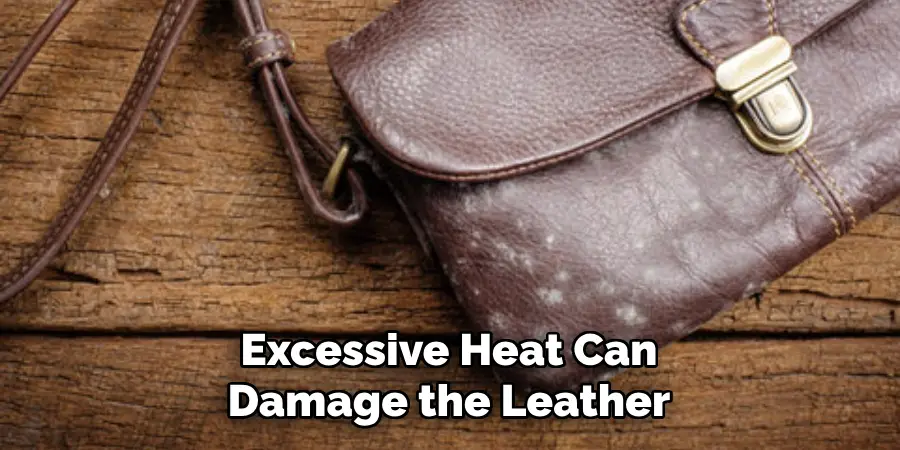
After warming the leather, massage the leather conditioner or oil into the material. This step is crucial as it nourishes and moisturizes the leather, preventing it from drying out and cracking. Be sure to use a high-quality product that is specifically designed for leather care.
6. Vaseline or Petroleum Jelly:
For extremely dry and stiff leather, a small amount of Vaseline or petroleum jelly can be applied. These substances provide a protective layer and help retain moisture, softening the leather over time. Apply a thin layer, massage it into the leather, and wipe away any excess. Do not use too much as it may create a greasy feel and attract dirt.
Vaseline or petroleum jelly can also be used to remove scuffs or scratches on leather. Simply apply a small amount onto the affected area, gently rub it in, and let it sit for a few hours before wiping away any excess. This method works especially well on lighter colored leather.
It is important to note that Vaseline or petroleum jelly should not be used on suede leather as it may permanently damage the material.
Another benefit of using Vaseline or petroleum jelly on leather is its ability to prevent water stains. Applying a thin layer on leather shoes, boots, or bags before going out in wet weather can help protect them from getting ruined by rain or snow.
7. Alcohol and Water Mixture:
Create a solution of rubbing alcohol and water, using equal parts of each. Dampen a clean cloth with the solution and gently rub it onto the leather. This method helps break down surface oils and can contribute to softening. Ensure the leather dries completely after application.
To further enhance the softening effects of the alcohol and water mixture, you can add a few drops of essential oils such as lavender or eucalyptus. Not only will this add a pleasant scent to your leather item, but these oils also have properties that can help condition and protect the leather.
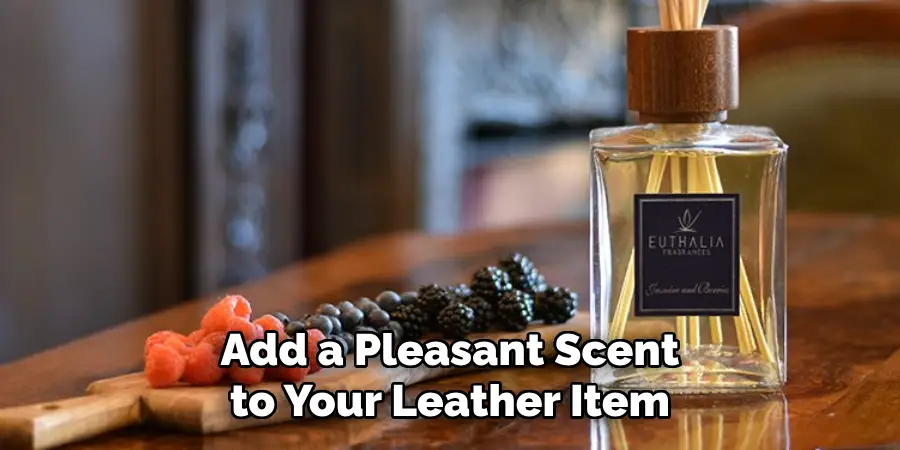
Another benefit of using an alcohol and water mixture is that it can help remove any lingering odors from the leather. Simply spray the mixture onto the affected area and let it sit for a few minutes before wiping it off with a clean cloth.
8. Wearing and Flexing:
Sometimes, the best way to soften leather is by wearing it. For items like shoes or gloves, wear them regularly to allow your body heat and movements to naturally soften the leather. Flex the leather gently to encourage flexibility, and apply a conditioner periodically to maintain softness. Additionally, you can use a leather stretching spray or cream to help mold the leather to your body shape and improve its overall comfort.
9. Commercial Leather Softeners:
Explore commercial leather softening products available in the market. These products are specifically designed to soften stiff leather items. Follow the product instructions for application, and be mindful of choosing a softener that suits your type of leather.
Leather is a unique and versatile material that has been used for centuries to create clothing, accessories, and furniture. However, over time, leather can become stiff and lose its suppleness. This is where commercial leather softeners come in.
Commercial leather softeners are specially formulated products designed to soften stiff leather items. They work by penetrating the pores of the leather and lubricating the fibers, making them more flexible and pliable. This not only restores the softness of leather but also helps to prevent cracking and damage.
There are various types of commercial leather softeners available in the market, each catering to different types of leather. Some products are specifically designed for delicate leathers such as suede or nubuck, while others are better suited for thicker, more durable leathers like full-grain leather. It’s important to choose a softener that is suitable for the type of leather you are treating.
10. Allow Time for Natural Aging:
Leather softens with age and use. Allow items to age naturally, and use them regularly to promote softening. This method is particularly effective for items like leather jackets, bags, and furniture. Regular conditioning can complement the natural aging process.
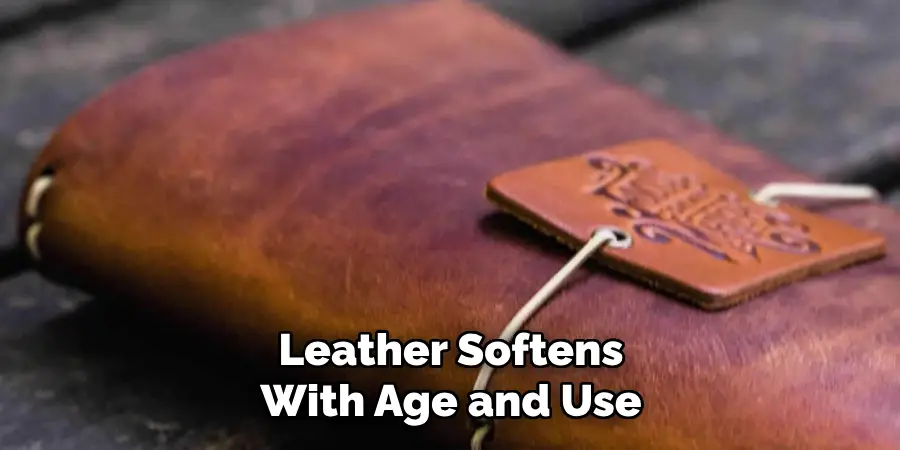
Natural aging is an important aspect to consider when taking care of leather items. Leather softens over time and use, which gives it a unique character and makes it more comfortable to wear or use. This process is known as patina.
Patina is the result of natural oils and waxes from your skin, exposure to air, sunlight, and moisture that penetrate the leather fibers, making it more pliable and supple. It also adds a beautiful sheen to the surface of the leather.
Conclusion
In conclusion, mastering the techniques to make leather softer enhances the comfort, appearance, and longevity of leather goods. By understanding the characteristics of leather and the factors influencing its softness, individuals can effectively choose and apply appropriate softening methods.
Conditioning with leather conditioners or natural oils, moisturizing with water and glycerin solutions, and employing gentle mechanical softening techniques are key strategies in the process.
Post-softening care, including proper absorption of moisture and conditioning agents, ensures lasting softness and suppleness. Embracing regular softening practices and adhering to best practices for leather care contribute to the preservation of leather quality over time.
Hopefully, this article gave you some helpful tips about how to make leather softer successfully, so now that you have the proper knowledge on how to get the job done, why not give it a try today?

